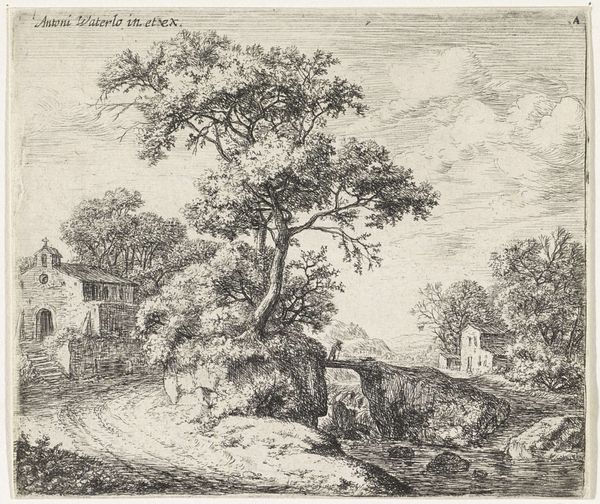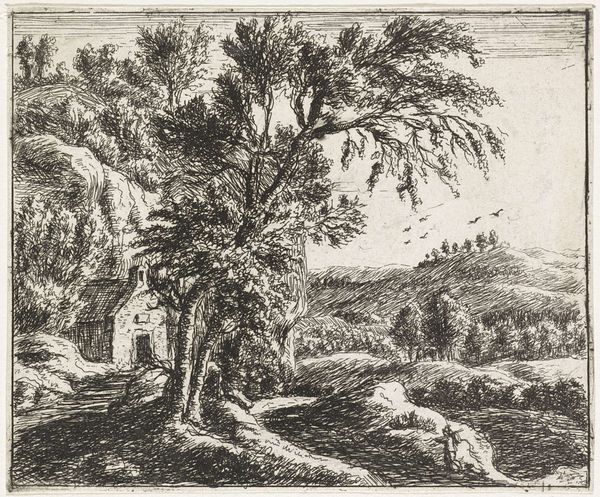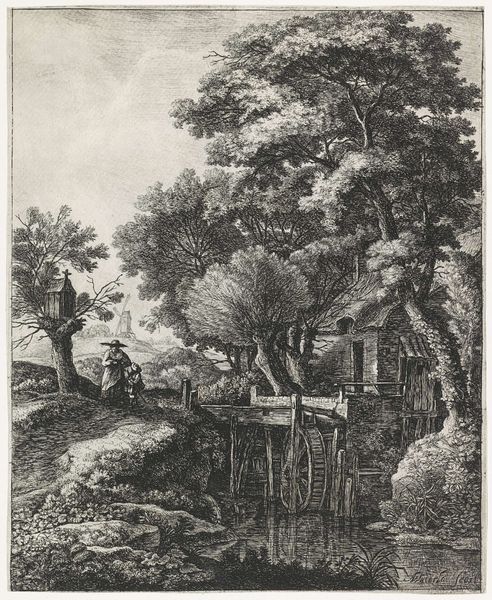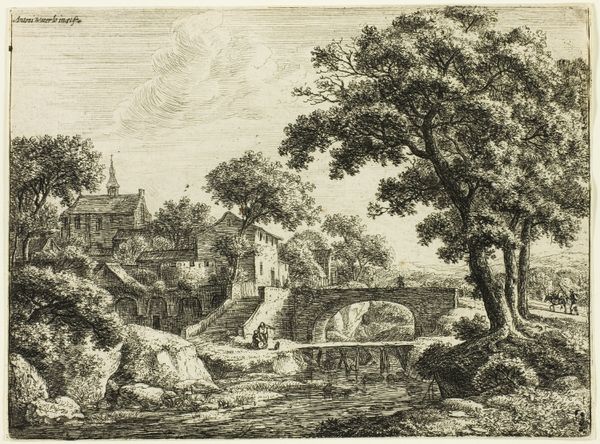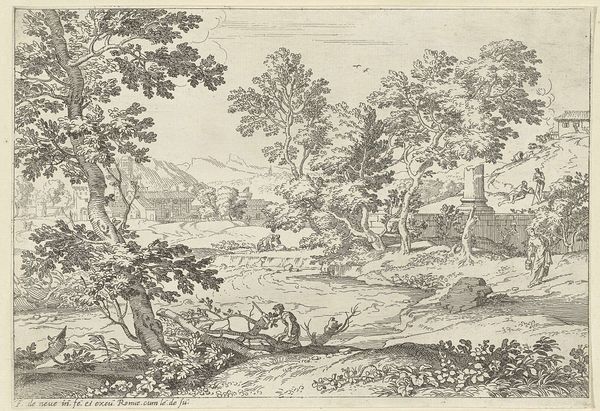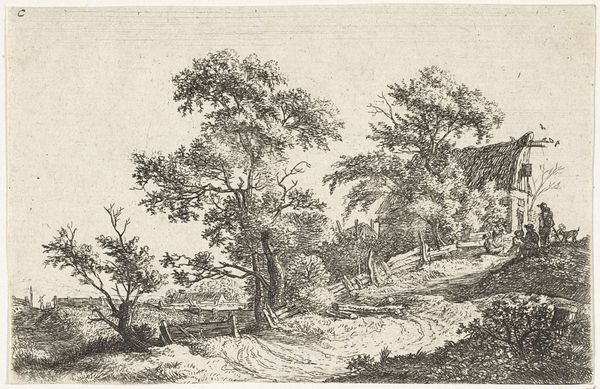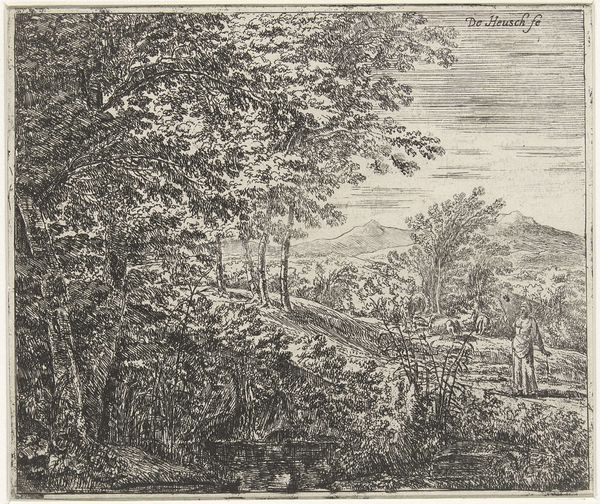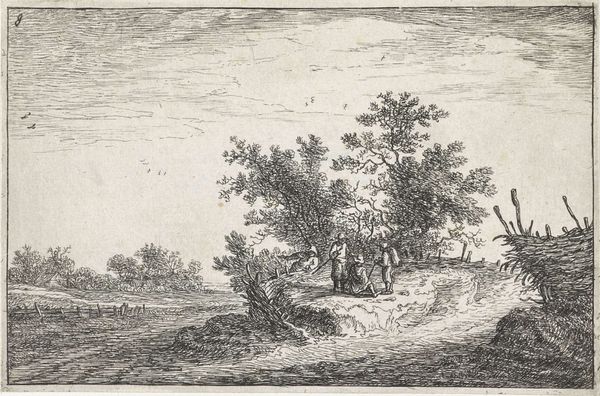
drawing, print, etching, intaglio
#
drawing
#
baroque
# print
#
etching
#
intaglio
#
landscape
Dimensions: height 130 mm, width 156 mm
Copyright: Rijks Museum: Open Domain
Curator: This etching by Anthonie Waterloo, possibly created between 1630 and 1717, is titled "Herder op een stenen brug," or "Shepherd on a Stone Bridge." It's part of the Rijksmuseum's collection. What strikes you immediately about it? Editor: It's incredibly detailed! All those tiny etched lines create such a dense, almost tactile surface. I can practically feel the rough texture of the stone bridge and the foliage. It’s clear labor went into its crafting, but I wonder what kind of consumer good the artist or institution viewed this object as? Curator: Well, prints like this circulated widely. Waterloo's landscapes were popular, and this particular work demonstrates a growing interest in rustic, everyday scenes. It captures a sort of idealized rural life that would have resonated with a burgeoning urban audience looking for an escape in imagery, as well as providing visual documents for geographical documentation. Editor: So, this wasn’t necessarily aiming for “high art” status, but more like functional imagery that satisfied a broader demand for a new form of material and social interest in an industrialized age. The etching process itself seems almost…democratic, in that way. I am intrigued that there were a waterfall to the right and what appears to be a mill house with a waterway depicted on the left side of the print. How does such careful application affect the economy? Curator: Exactly! The Baroque style also lends itself well to the depiction of landscape. It’s an aesthetic movement that brought renewed focus on the public role of nature, making prints like this particularly desirable. It romanticizes pastoral scenes that are already impacted by colonialist endeavors, industrial pursuits and a shifting of natural resources into commodities. And for Waterloo, an emigre and printmaker of the period, it would also mean opportunities to develop social networks through imagery in a shifting marketplace. Editor: That resonates so well, I keep coming back to that bridge, doesn't it almost seem to divide the print, showing the different sides to colonialist ambition! Curator: Precisely. A bridge between nature and production. It highlights art’s pivotal role in communicating specific ideals to an audience. What do you make of this division? Editor: This has made me really think about this work in terms of its production—both artistic and societal. The labor invested in the printing process and its place within the social consumption patterns that defined this new global perspective really transform our relationship with imagery today! Curator: Agreed. It also allows a lens into the artistic movements in which society creates not just artworks, but perspectives.
Comments
No comments
Be the first to comment and join the conversation on the ultimate creative platform.

